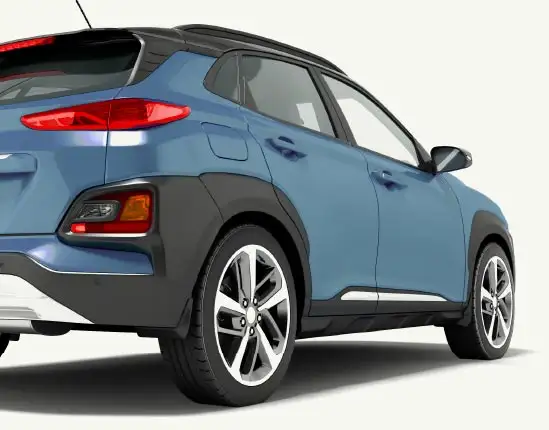Recent Blog Articles

List of blog articles on our auto buying marketplace
Learn about frequent car loan pitfalls and how to sidestep them to ensure a smooth financing experience.
Does Refinancing an Auto Loan Hurt Your Credit Score? By Greg ThibodeauRefinancing your auto loan can lead to lower interest rates and monthly payments, but it's essential to understand its impact on your credit score and overall financial health.
Summer's End Doesn't Mean Your Riding Season Has to Stop By Staci BaileyWhile fair-weather riders pack their bikes away after Labor Day, smart motorcyclists gear up for the most comfortable riding months of the year.
Ideas That Save Money Financing an Auto Loan By Dale PetersonGetting new auto financing can be easy and quick if done right. Given the numerous lending platforms available in the market, it is essential to understand how to make the right choice.
Used Car Prices Surge for 5th Straight Month: Smart Financing Can Help You Navigate the Market By Greg ThibodeauIf you've been shopping for a car lately, you've probably noticed something alarming: prices keep climbing.
Fed Rate Cuts Coming? Perfect Time to Refi Car Loan By Staci BaileyWith economic signals pointing toward possible rate reductions ahead, millions of Americans with auto loans are wondering if they can secure a lower auto payment through refinancing.
Ready to Upgrade? Smart Ways to Improve Your Car and Loan Situation By Greg ThibodeauReady to upgrade your car or improve your loan terms? Learn smart strategies to get a better vehicle, lower payments, or improved financing in 2025
Should I Refinance My Car Loan? Your Guide to Saving in 2025 By Staci BaileyShould I refinance my car loan? Learn how refinancing can save you thousands in 2025. Your Guide to auto loan refinancing with step-by-step instructions.
Mt. Bachelor Bike Park: A Late-Summer Ride You Can’t Miss By Greg ThibodeauLift-served trails, big views, and easy planning for end-of-summer riding.
The Hidden Costs of 7-Year Auto Loans By Greg ThibodeauExploring the financial pitfalls of extended auto loan terms and offering strategies to make informed vehicle financing decisions.
How Auto Loan Pre-Approval Empowers Your Car Buying By Staci BaileyDiscover how obtaining auto loan pre-approval can enhance your car buying experience by strengthening your negotiating position, setting a realistic budget, and potentially saving you money.
Protect Yourself from Auto Loan Refinancing Scams By Greg ThibodeauLearn how to identify and avoid auto loan refinancing scams to safeguard your finances and vehicle.
First-Time Car Buyer Loans: Tips & Smart Moves By Staci BaileyStepping into car ownership for the first time? Here’s how first-time buyer programs work, what to watch for, and why using a loan marketplace like myAutoloan can put you in the driver’s seat with more confidence.
Understanding myAutoloan: An Overview By Greg ThibodeaumyAutoloan connects potential car buyers with a network of lenders, enabling them to secure financing for purchasing new or used vehicles.
Electric Vehicle Trends & Auto Loans By Greg ThibodeauThinking about financing an electric vehicle? Learn how EV buying trends impact loan options, rates, and practical decisions so you can save big and feel confident navigating your car purchase.
Auto Loan Financing in 2025 By Dale PetersonWhile loans make it feasible to buy a car, some people end up paying much more than necessary due to unfavorable financing terms.
See It, Love It, Drive It: Financing Your Dream Car After the Auto Show By Staci BaileyAuto shows spark car buying dreams, but how do you turn admiration into ownership? Discover tips for financing new cars, trucks, and SUVs and how myAutoloan streamlines the journey.
Smart Options for Budget-Conscious Buyers By Dale PetersonWhile many buyers used to look to the used car market as a place to find reliable transportation for less, the prices of many popular models are now close to - or even above - their new car equivalents.
Car Loan Shopping: Get Offers, Not Overwhelmed By Greg ThibodeauChoosing the right car loan can save you a bundle. See how comparing offers, knowing your credit, and using smart tools at myAutoloan can make buying—or refinancing—a car easier, even if your finances are unique.
Explore Some of the Oldest Roads in the US By Greg ThibodeauDiscover the charm and history of America's oldest roads on your next road trip. From the iconic Route 66 to the historic Boston Post Road, embark on a journey through time and explore the rich heritage of these historic routes.
Motorcycle Financing: 10 Things to Know in 2025 By Greg ThibodeauDiscover the 10 key things to know about motorcycle financing in 2025. Get tips on securing the best deal and exploring diverse financing options.
Best Time to Refinance By Dale PetersonRefinancing a car or truck can be a savvy financial move, potentially saving you money over the life of your loan.
Financing an Auto Loan By Dale PetersonOne of the standout features of myAutoloan is its streamlined application process.
Advantages of Online Auto Financing By Dale PetersonLet's explore the benefits of securing a car loan through an online lending platform and how it can streamline the car buying process for consumers.
Does Your Auto Insurance Cover A Rental Car? By Moses MwangiWhile your auto insurance policy might be enough, you might want to purchase supplemental liability insurance if you don't have your own policy.